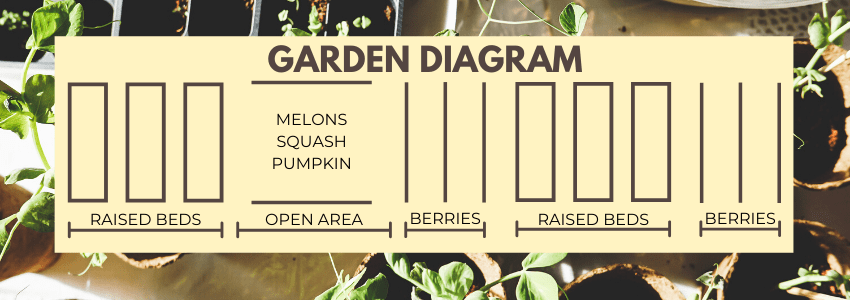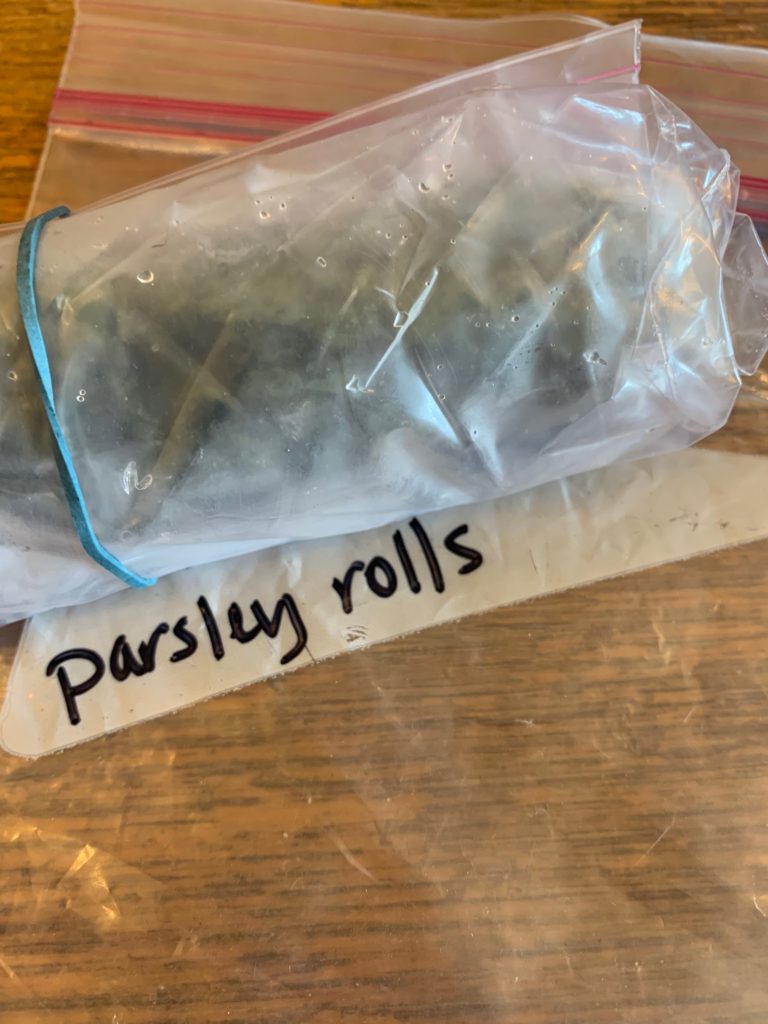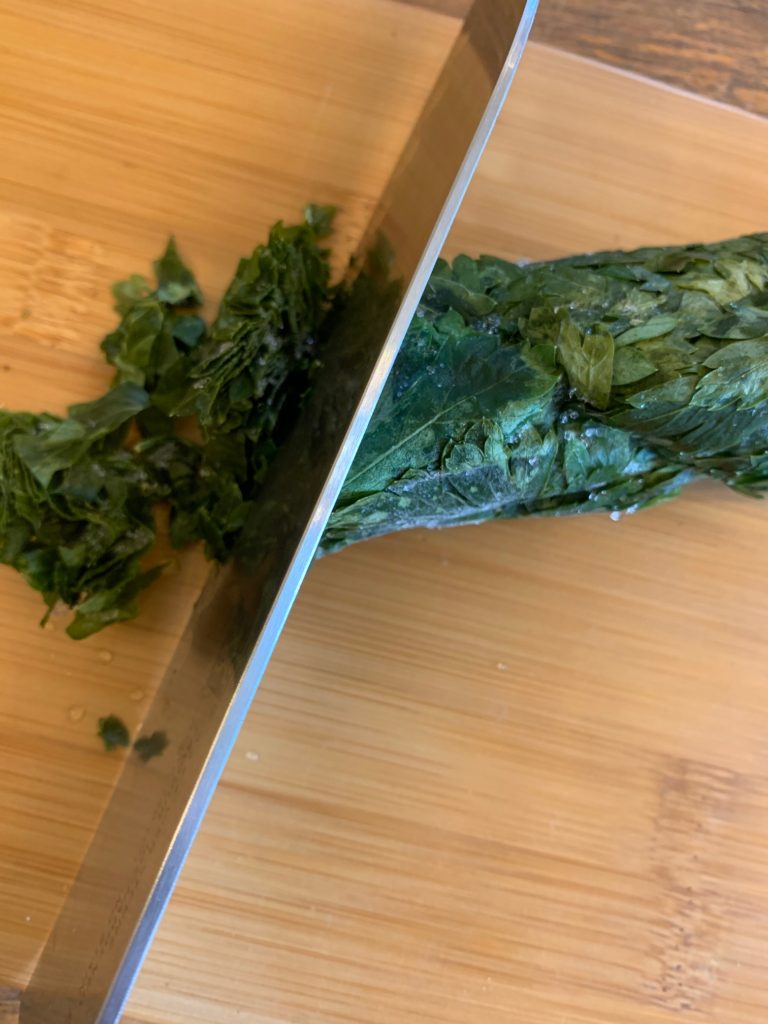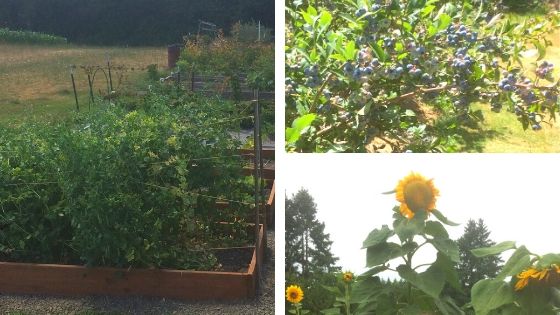Despite the uncertainty swirling around much of the world these days, the sun continues to rise and set, and spring has officially arrived. My garden was sadly neglected last year, but this year I’m back with a raised bed garden plan. Three kids home from school for the next who knows how many weeks, means lots of help for planting, watering, weeding, and pretty much all the chores I can dream up 🙂 We have six 4’x12′ raised beds, along with an open area of about 12’x12′ that I use for vegetable planting.

Raised Beds Planting
I have been planting in raised beds for several years, and I love them! We cover them with black plastic over the winter, which kills off most of the weeds. This has been a game-changer for keeping up with weeding—my most despised of all garden tasks. My handy husband installed drip lines in the entire garden, connected to a timer that I can adjust as needed. Without that, I would have a part-time job just watering! Here’s what I intend to plant in my raised beds this spring/summer.

Raised Bed #1: Peas, Cucumber, Marigolds
Sugar snap peas and snow peas are a kid favorite around here. Since we already have stakes and string set up in this bed for the peas, I am going to add a small vertical trellis for cucumbers at the end of this bed. Cucumbers and peas are great companion plants; growing them together will result in decreased pests and disease. I am also planning to put marigolds in this bed. Most years I plant marigolds in a flower bed, but have not put them in my raised beds with vegetables. They provide cheerful pops of color, with the added benefit of attracting valuable insects and repelling pests.
Raised Bed #2: Greens, Radish, Beets, Onion
My second bed contains kale, spinach, and a few lettuce varieties, as well as radish, beets, and onion. Basically this one is the foundation for my salad bar. We don’t typically eat all the kale we grow, but I blanch and freeze it and add it to soups and smoothies all winter. I especially like kale in smoothies with honeydew melon. Pickled beets are one of my favorite salad additions, and beets at the top of my favorite roasted veggies, so they are a must for my garden. My advice is to plant what you like to eat!
Raised bed #3: Strawberries, Cilantro, Basil
We have grown strawberries in a few different areas on our property over the past decade, but last year we pulled out our remaining strawberry plants, as they were not producing very well. Usually they produce well for a couple of years, and then the yield begins to dwindle. We’re putting just a few strawberry plants back in one of our raised beds, along with some herbs like cilantro, dill, tarragon, and basil. I will probably go heavy on the basil here, as my freezer is almost out of pesto.
My favorite way to keep pesto on hand is to make big batches in the summer, both traditional basil pesto, kale pesto, and spinach pesto. I then scoop the blended pesto onto a parchment covered baking sheet in hamburger patty shaped portions and slip the whole thing in the freezer. Once frozen, the patties will lift easily off the parchment paper and can be stored in freezer bags for use all year long.
Raised Bed #4: Carrots, Green Onion, Broccoli, Green Beans, Cabbage, Nasturtiums
In the fourth bed, I’m putting carrots, green onion, and broccoli on one end. At the other end of the bed I’m planting green beans, cabbage and some nasturtiums for added pest control (and a dose of pretty)!
Raised Bed #5: Tomatoes, Peppers, Parsley, Marigolds
The fifth bed will hold cherry tomatoes, bell peppers, jalapeno peppers, parsley, and marigolds again for some pest protection.
We usually eat all the cherry tomatoes and peppers that we grow, but with the parsley, I snip it off and stuff it into a plastic freezer bag. I push all the parsley as far down to the bottom of the bag as possible, roll the bag into a cylindrical shape, and secure it with a couple of rubber bands. I toss this in the freezer and then just slice off a bit of parsley whenever I need it. This works great with other herbs too. Make sure you label your bags!


Raised Bed #6: Cut Flower Garden
I decided to compress my vegetables into five beds (plus separate areas for growing corn, squash, and melon) and reserve one entire bed for a flower garden. Having fresh flowers to cut and bring in the house and on my porch throughout the summer makes me happy! Last summer my sunflowers didn’t grow like they did two years ago, but I’m going to try again this year. The line of sunny blooms along the length of our chicken run made me smile every time I saw them.

Planting Timeline
We are in the Pacific Northwest, so my planting times are based on Zone 8 recommendations. Here is my loose timeline for planting my raised beds.
MARCH/Early April Plant Outdoors
Most of these I will plant a little every 2-3 weeks for a staggered harvest.
- Beets
- Broccoli
- Cabbage
- Carrots
- Cilantro
- Kale
- Lettuce
- Radish
- Spinach
- Marigolds (April planting)
MARCH/April Start Indoors
- Basil
- Brussels sprouts
- Green beans
- Onions
- Parsley
- Peppers
- Tomatoes
June plant Outdoors
- Corn
- Cucumber
- Melon
- Squash
You can find a wealth of information about what and when to plant for your gardening zone, companion planting, and garden maintence at The Old Farmer’s Almanac.
Favorite Garden Tools and Supplies
There is something miraculous about watching seeds transform into plants and then into food or flowers. I’m looking forward to seeing those sprouts and blooms. And making my kids eat cabbage and beets!

Join my mailing list to receive updates when new printable resources are added to the library, plus tips and encouragement for your organized homeschool journey.








Where are you growing corn? And do I consider the top of the layout North?
That year we grew corn in a separate area from the raised beds, in 40 foot rows along one edge of our chicken enclosure. If you mean the top of the layout being the raised bed with the peas, that is actually east for us.
What size are your beds?
They are 4’x8′